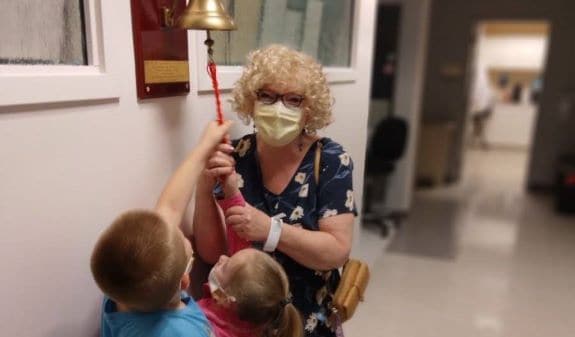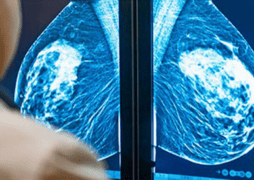It’s a health mantra almost every woman could say in her sleep: “Exercise regularly and watch your weight.” In fact, it’s heard so often that it’s very easy to tune out. But, this is an important message that everyone should take to heart, especially breast cancer survivors.
There’s very good evidence that exercising and maintaining a healthy weight is beneficial for breast cancer survivors. A healthy lifestyle may help boost survival as well as help relieve many conditions survivors often have to endure, like pain, fatigue, stress and anxiety. Getting regular exercise and avoiding weight gain also has the added benefit of lowering the risk of other major diseases – like heart disease, diabetes and stroke. These diseases remain important concerns for everyone, including survivors, as they get older.
Does exercise affect survival after breast cancer?
Regular exercise has a positive effect on the health of breast cancer survivors. Not only is it linked to a lower risk of dying from breast cancer (breast cancer-specific mortality), breast cancer survivors who exercise also have a lower risk of dying from any cause (overall mortality).1-2
Find a summary table of the scientific evidence on exercise and breast cancer survival.
How much and what type of exercise should I get?
The American Cancer Society (ACS) Guidelines on Nutrition and Physical Activity for Cancer Survivors recommend that breast cancer survivors:3
- Avoid inactivity and return as soon as possible to normal activities after surgery and during radiation therapy and adjuvant treatment (chemotherapy, hormone therapy and/or targeted therapy)
- Slowly build up to 30 minutes or more of moderate aerobic activity (like brisk walking or riding a stationary bike) on five or more days a week
Results from a large study of over 13,000 breast cancer survivors found that women meeting or going beyond the 150 minutes per week guideline had a 25 percent lower risk of dying from breast cancer and a 27 percent lower risk of dying from any cause compared to women who were less active.1
The ACS guidelines also recommend adding strength-training exercises twice a week for added benefits (see safety issues below). Whether through lifting weights, using exercise bands or other means, the focus should be a balanced one that works all major muscle groups.
Does exercise affect other aspects of life after breast cancer?
A number of studies have found that exercise can provide a positive boost to many aspects of life as a survivor. Quality of life, physical functioning (being able to do day-to-day activities), energy levels and anxiety levels all improve with regular exercise.4 Exercise may also reduce fatigue, depression and pain as well as help manage post-treatment symptoms. According to Dana-Farber Cancer Institute Medical Oncologist and Komen Grantee Dr. Jennifer Ligibel, “Many studies have shown that even modest amounts of exercise after a cancer diagnosis and treatment can help breast cancer survivors feel better, experience fewer side effects from treatment and increase their energy.”
What about safety?
Studies show that exercise is safe during chemotherapy and radiation therapy as well as after treatment.4 Even for breast cancer survivors with lymphedema, weight-lifting (strength training) in a supervised setting does not appear to worsen the condition and may even help relieve some symptoms.5 Women with lymphedema who are interested in upper body strength training may want to talk to an exercise specialist to ensure the exercises are done correctly and safely.
Survivors with heart, bone, nerve or extreme fatigue issues should consult with their health care providers before starting a new exercise program. And, it’s important for women to ask their providers how much time they need to allow for healing after breast surgery before doing anything more than light activity.
How does weight affect recurrence and survival after breast cancer?
Being overweight – especially being obese – at the time of diagnosis is linked with both poorer overall survival and poorer breast cancer-specific survival. It may also increase the risk of breast cancer recurrence.6-7
Gaining weight after diagnosis has also been shown in some studies to increase the risk of recurrence, breast cancer-specific mortality and overall mortality.8
Find a summary table of the scientific evidence on body weight and breast cancer survival.
What’s a healthy weight for a survivor?
The last thing any breast cancer survivor wants to deal with after going through diagnosis and treatment is added worry about her weight. The most important goal is to try to keep your weight steady and not to gain. If you are overweight and looking to do more, the best way to lose weight is a combination of healthy diet and exercise. Talk to your health care provider about the best approach for you.
Your ideal weight depends upon your height, so recommendations are usually based upon body mass index (BMI). BMI is a measure that combines height and weight. A BMI between 18.5 and 25 is considered a healthy weight. For example, for a woman who is 5’6”, this means a weight between 115 to 154 pounds. Calculate your BMI.
What else can survivors do?
In addition to exercising, there are many other behaviors that are important for the health of breast cancer survivors – both in terms of cancer and other chronic diseases. For example, breast cancer survivors should follow the same healthy diet recommended for everyone.3 This diet, outlined below, promotes overall health and may help protect against different types of cancer and other diseases.3,9
- Achieve and maintain a healthy weight. (Survivors who are overweight or obese should limit high-calorie foods and beverages and increase physical activity to help with weight loss.)
- Eat at least 2 ½ cups of fruits and vegetables every day.
- Choose 100 percent whole grain foods (for example, 100 percent whole grain breads and cereals, brown rice, popcorn and quinoa).
- Limit red meat and processed meat (choose chicken, fish or beans instead).
- Cut down on “bad” fats (saturated and trans fats) and eat more “good” fats (polyunsaturated and monounsaturated fats, like olive and canola oil).
- Get enough vitamin D and calcium every day. (For women ages 51 to 70, this means 600 IU of vitamin D and 1,200 mg of calcium. For men ages 51 to 70, this means 600 IU of vitamin D and 1,000 mg of calcium.)
- If you drink alcohol, limit to less than one drink of alcohol a day (for women, and fewer than two drinks a day for men).
Adapted from American Cancer Society’s Guidelines on Nutrition and Physical Activity for Cancer Survivors, Washington University School of Medicine’s Siteman Cancer Center’s Your Disease Risk and Institute of Medicine’s Dietary Reference Intakes for Calcium and Vitamin D.3,10-11
Learn more about healthy weight, diet and exercise for breast cancer survivors.
Summary
Making healthy lifestyle choices has many benefits for everyone. Being more active and maintaining a healthy weight not only make you feel good inside and out, but also lower your risk of many chronic diseases. For breast cancer survivors, there are added benefits. Exercise and maintaining a healthy weight improve survival and may lower the risk of breast cancer recurrence.
Even if you were not active or were overweight before your diagnosis, you can adopt a healthy lifestyle at any time and still get the many benefits.
What is Komen doing?
Since 1982, Komen has supported more than 40 research grants totaling nearly $20 million related to obesity, weight and exercise. Examples of some projects include:
- Developing exercise and weight management programs to help improve survival, prevent recurrence and decrease breast cancer-related side effects such as depression, fatigue and pain.
- Identifying the lifestyle factors that contribute to obesity, including night shift work and high fat or high sugar diets, and breast cancer progression and survival.
- Determining whether metformin (a drug used to treat diabetes) can prevent or treat breast cancer, or improve survival, in obese or overweight women.
- Identifying the biological factors that cause weight gain in women with early stage breast cancer and testing strategies to prevent this weight gain.
Learn more about:
- Komen’s Promise Grant focused on obesity and breast cancer
- How Komen-funded researchers are targeting obesity to prevent breast cancer.
References
- Beasley JM, Kwan ML, Chen WY, et al. Meeting the physical activity guidelines and survival after breast cancer: findings from the after breast cancer pooling project. Breast Cancer Res Treat. 131(2):637-43, 2012.
- Ibrahim EM, Al-Homaidh A. Physical activity and survival after breast cancer diagnosis: meta-analysis of published studies. Med Oncol. 28(3):753-65, 2011.
- Rock CL, Doyle C, Demark-Wahnefried W, et al. Nutrition and physical activity guidelines for cancer survivors. CA Cancer J Clin. 62(4):243-74, 2012.
- Schmitz KH, Courneya KS, Matthews C, et al. American College of Sports Medicine roundtable on exercise guidelines for cancer survivors. Med Sci Sports Exerc. 42(7):1409-26, 2010.
- Schmitz KH, Ahmed RL, Troxel A, et al. Weight lifting in women with breast-cancer-related lymphedema. N Engl J Med. 361(7):664-73, 2009.
- Protani M, Coory M, Martin JH. Effect of obesity on survival of women with breast cancer: systematic review and meta-analysis. Breast Cancer Res Treat. 123(3):627-35, 2010.
- Ligibel J. Obesity and breast cancer. Oncology (Williston Park). 25(11):994-1000, 2011.
- Kroenke CH, Chen WY, Rosner B, Holmes MD. Weight, weight gain, and survival after breast cancer diagnosis. J Clin Oncol. 23(7):1370-8, 2005.
- McCullough ML, Patel AV, Kushi LH, et al. Following cancer prevention guidelines reduces risk of cancer, cardiovascular disease and all-cause mortality. Cancer Epidemiol Biomarkers Prev. 20(6):1089-97, 2011.
- Siteman Cancer Center at Washington University School of Medicine. Your Disease Risk. http://www.yourdiseaserisk.wustl.edu, 2013.
- Committee to Review Dietary Reference Intakes for Vitamin D and Calcium, Food and Nutrition Board, Institute of Medicine. Ross CA, Taylor CL, Yaktine AL, Del Valle HB (eds.). Dietary reference intakes for calcium and vitamin D. The National Academies Press, National Academy of Sciences: Washington, D.C. http://www.iom.edu/vitaminD, 2010.



